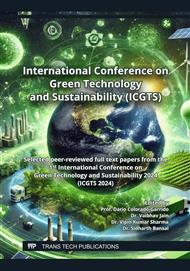p.47
p.53
p.67
p.79
p.89
p.103
p.117
p.131
p.139
Thermodynamic Analysis of Vapour Compression Refrigeration System with Dedicated Mechanical Sub-Cooling
Abstract:
Vapour compression refrigeration system (VCRS) is being used in various applications, but their high power consumption poses challenges when it comes to energy efficiency and impact on the environment. One approach to improve performance of VCRS is through sub-cooling, which involves cooling the refrigerant coming out of the condenser coil. Dedicated mechanical sub-cooling system, which utilize a separate sub-cooling cycle attached to the main cycle, have shown the potential for enhancing system performance. This paper focuses on the study of the effect of alternative refrigerants, evaporator temperature, condenser temperature, degree of overlap, and the degree of sub-cooling on VCRS with dedicated mechanical sub-cooling system. The findings suggest that using R134a in both cycles leads to maximum COP of system and second-law efficiency. Optimizing certain variables such as evaporator temperature, condenser temperature, degree of overlap, and degree of sub-cooling can also enhance net COP and second-law efficiency of system. This paper investigates the optimum degree of sub-cooling under ideal dedicated mechanical sub-cooling cycles, and it is observed that the system have maximum net COP when degree of sub-cooling is 17 °C. Keywords: VCRS, Dedicated mechanical sub-cooling, COP, R134a, Energy analysis
Info:
Periodical:
Pages:
103-116
Citation:
Online since:
August 2025
Keywords:
Price:
Сopyright:
© 2025 Trans Tech Publications Ltd. All Rights Reserved
Share:
Citation:


